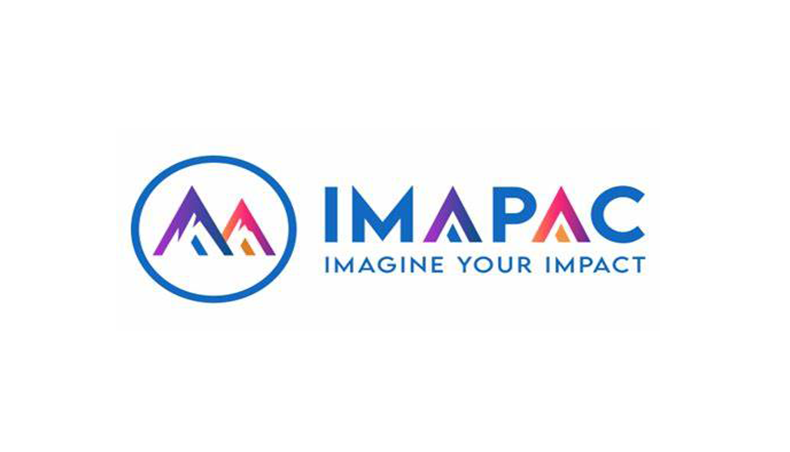Ensuring Biologic Stability with Tailored and Cutting-Edge Lyophilization Solutions
As the demand for biologic drugs grows, ensuring their stability and manufacturability is more critical than ever. Lyophilization offers a proven solution, but its success depends on deep scientific expertise, advanced modeling, and tailored process development. Coriolis Pharma applies a precision-driven approach to formulation and freeze-drying, integrating quality-by-design principles, predictive modeling, and cutting-edge lyophilization technologies to optimize stability, scalability, and global accessibility of biopharmaceuticals.
Expanding Demand for Lyophilization in Biopharmaceuticals
Biologic drug substances are significantly larger and more complex than traditional small molecule drugs, and most require parenteral administration, typically via intravenous or subcutaneous injection. However, many biologics are inherently unstable in aqueous formulations, necessitating storage and transport at frozen temperatures. This requirement introduces logistical challenges, including the need for an extensive temperature-controlled infrastructure, which increases costs and complicates global distribution.
A well-established alternative is lyophilization, or freeze-drying, which transforms liquid biopharmaceuticals into stable powders that can be stored and transported at ambient or refrigerated temperatures. This eliminates the need for temperature-controlled logistics, reducing costs, expanding access to broader markets, and improving global patient reach. Notably, lyophilization is the preferred method for preserving many temperature-sensitive biopharmaceuticals, as alternative stabilization techniques, such as spray drying, often involve high temperatures that can degrade proteins, antibodies, and next-generation biologics.
The demand for lyophilization services is increasing in parallel with the growing pipeline of biologic drugs. As more complex therapies emerge, lyophilization remains a reliable approach for ensuring stability. For example, all currently approved ADCs are lyophilized due to the inherent instability of their linker chemistry in liquid formulations.
However, the decision to develop a lyophilized formulation versus a frozen liquid product is influenced by multiple factors, including the drug’s stability, intended patient population, and commercialization strategy. During the COVID-19 pandemic, for instance, mRNA vaccines were distributed as frozen liquids to accelerate time to market, as developing a robust lyophilization process would have required additional time and resources. Nevertheless, transitioning from frozen to lyophilized formulations is often pursued later in a product’s life cycle to mitigate the high costs of temperature-controlled logistics and facilitate global distribution.
Lyophilization is widely adopted across established biologic modalities, with available technologies supporting both small- and large-scale production. While cell and gene therapies are still predominantly formulated as frozen products, the industry is actively exploring lyophilization strategies for these next-generation treatments. Continuous freeze-drying technologies hold promise for these advanced therapies by enhancing efficiency, reducing energy consumption, and improving scalability. As these fields mature, further investment in lyophilization innovation will be critical to ensuring the stability and accessibility of cutting-edge biologics.
Overcoming Challenges in Lyophilization
Like any advanced bioprocessing technology, lyophilization presents several challenges that must be carefully managed to ensure successful implementation. The process requires highly specialized, costly equipment and a workforce with deep expertise in freeze-drying technologies. Unlike some other stabilization methods, lyophilization involves extended cycle times and high energy consumption, both of which contribute to substantial operating costs.
Developing an optimal lyophilization process is also time-intensive. Each product requires tailored process conditions, and scaling from laboratory-scale freeze dryers to commercial-scale systems introduces additional complexities. While the core freeze-drying process remains consistent at the unit-dose level, factors such as heat transfer dynamics, condenser capacity, and equipment-specific variations must be carefully accounted for during scale-up. Without a deep understanding of these variables, there is a high risk of process failure, which can lead to costly delays and product loss.
Despite these challenges, lyophilization remains the preferred stabilization method for many high-value biopharmaceuticals that require long-term stability and global distribution. In cases where liquid formulations are not feasible due to instability, and where cold-chain logistics are impractical or cost-prohibitive, freeze-drying provides a robust solution. Advances in modeling, automation, and monitoring technologies are helping to streamline lyophilization development, improving efficiency and reducing risk. By integrating predictive process models and quality-by-design (QbD) principles, developers can accelerate process optimization while minimizing scale-up uncertainties.
As biopharmaceutical companies continue to expand their pipelines with increasingly complex modalities, the need for expert-driven lyophilization strategies will only grow. Companies with advanced lyophilization capabilities and deep process knowledge will play a critical role in ensuring the stability, manufacturability, and commercial viability of next-generation biologics.
Enhancing Lyophilization with a Cutting-Edge Quality-by-Design
A QbD approach in itself is particularly well-suited for lyophilization process development, as freeze-drying involves a limited number of critical process parameters (CPPs) — primarily shelf temperature and chamber pressure. Unlike many other bioprocessing methods that require extensive parameter optimization, lyophilization benefits from well-documented literature and established process models that enable systematic development and optimization.
QbD in combination with predictive modeling emphasizes a deep understanding of the relationships between CPPs, critical material attributes (CMAs), and critical quality attributes (CQAs) to ensure product stability and manufacturability. By integrating these insights, developers can make informed decisions about optimizing lyophilization conditions, ensuring process robustness, and facilitating seamless scale-up.
Process modeling plays a central role in this approach, particularly for the two drying phases of lyophilization: sublimation (primary drying) and desorption (secondary drying). Coriolis Pharma can help with exceptionally advanced process models, providing a structured framework for predicting optimal process conditions with minimal experimental iterations and significantly reducing development time and costs. These models serve as the ultimate demonstration of process understanding, helping developers refine freeze-drying protocols while minimizing the risk of product instability.
One of the key challenges in lyophilization is the inability to incorporate in-line sensors to directly monitor critical process conditions — such as the evolving interface between ice and vacuum within each vial — without risking sterility or introducing contamination. Traditionally, freeze-drying has been a “blind” process, with product quality assessed only after completion. However, recent advancements in wireless sensors and predictive modeling have enabled real-time monitoring and process control. These cutting-edge tools can generate indirect data that feed into process models, allowing for continuous optimization without direct interference with the sterile environment.
Additionally, the integration of wireless sensors with automated loading and unloading systems is driving a shift toward fully automated lyophilization operations. This evolution enhances process consistency, minimizes human intervention, and reduces the risk of contamination, ultimately improving efficiency and product quality.
Addressing Sustainability Concerns
Sustainability has become a key priority across the biopharmaceutical industry, not only to reduce the environmental impact of drug manufacturing but also to enhance efficiency, productivity, and cost-effectiveness. Lyophilization, traditionally an energy-intensive process, is now a focal point for innovation aimed at minimizing resource consumption and optimizing operational sustainability.
Equipment manufacturers are actively redesigning freeze-drying systems to lower their carbon footprint. One notable approach is the adoption of alternative refrigerants with reduced environmental impact. At the same time, technology providers and drug developers are collaborating on strategies to decrease energy consumption and shorten lyophilization cycle times, making the process more sustainable without compromising product quality.
Continuous lyophilization is one of the most promising advancements in this space. By significantly reducing heating and cooling requirements, this emerging technology not only cuts energy consumption but also minimizes the footprint of aseptic processing areas. These improvements translate into lower operating costs and greater overall efficiency.
Sustainability in freeze-drying is ultimately about balancing environmental responsibility with process robustness and economic viability. Through continued innovation and investment, the industry is making strides toward more energy-efficient and environmentally conscious lyophilization solutions that meet the growing demand for stable biopharmaceutical products.
Advancing Parenteral Formulation and Lyophilization at Coriolis Pharma
Formulation development for biopharmaceuticals requires deep expertise in both liquid and lyophilized products to ensure optimal dosage forms and process conditions. Coriolis Pharma provides comprehensive support for both approaches, enabling informed decision-making from the outset and mitigating risk throughout development.
Rather than applying a standardized platform approach, Coriolis Pharma tailors lyophilization processes to the specific requirements and failure modes of each biopharmaceutical modality. This customization ensures that freeze-drying conditions are optimized for each product, supporting stability, manufacturability, and long-term viability. With extensive academic and industrial expertise and staying up to date on new market trends, Coriolis scientists specialize in developing robust formulations and freeze-drying processes for complex biologics.
As part of its cutting-edge QbD approach, Coriolis Pharma integrates advanced mathematical modeling to establish scalable, cost-effective processes. These models enable precise prediction and control of process parameters — many of which are difficult or impossible to measure directly in aseptic environments. Additionally, Coriolis offers more than 200 analytical methods for comprehensive product characterization, most of which are available under GMP conditions.
Coriolis has made significant investments in specialized lyophilization infrastructure, including a diverse portfolio of Martin Christ freeze-dryers with varying temperature capabilities, automation levels, loading patterns, and process analytical technologies. These capabilities support projects across different scales, including biosafety level 2 (BSL-2) environments. To further advance innovation, Coriolis’ internal science and technology group continuously develops solutions tailored to client needs. In Q1 2022, the company expanded its Advanced Therapy Medicinal Products (ATMP) facility, featuring a 1,000-m² BSL-2 laboratory with dedicated lyophilization equipment to support development efforts.
Collaboration is central to Coriolis Pharma’s approach. Whether engaging with clients at the early development stage or providing troubleshooting support for late-stage programs, Coriolis emphasizes seamless knowledge transfer, proactive risk mitigation, and process optimization. Close, transparent communication ensures alignment with client goals, with direct access to operational team members and regular interactions with distinguished scientific advisors who bring both academic and industry insights to every project.

